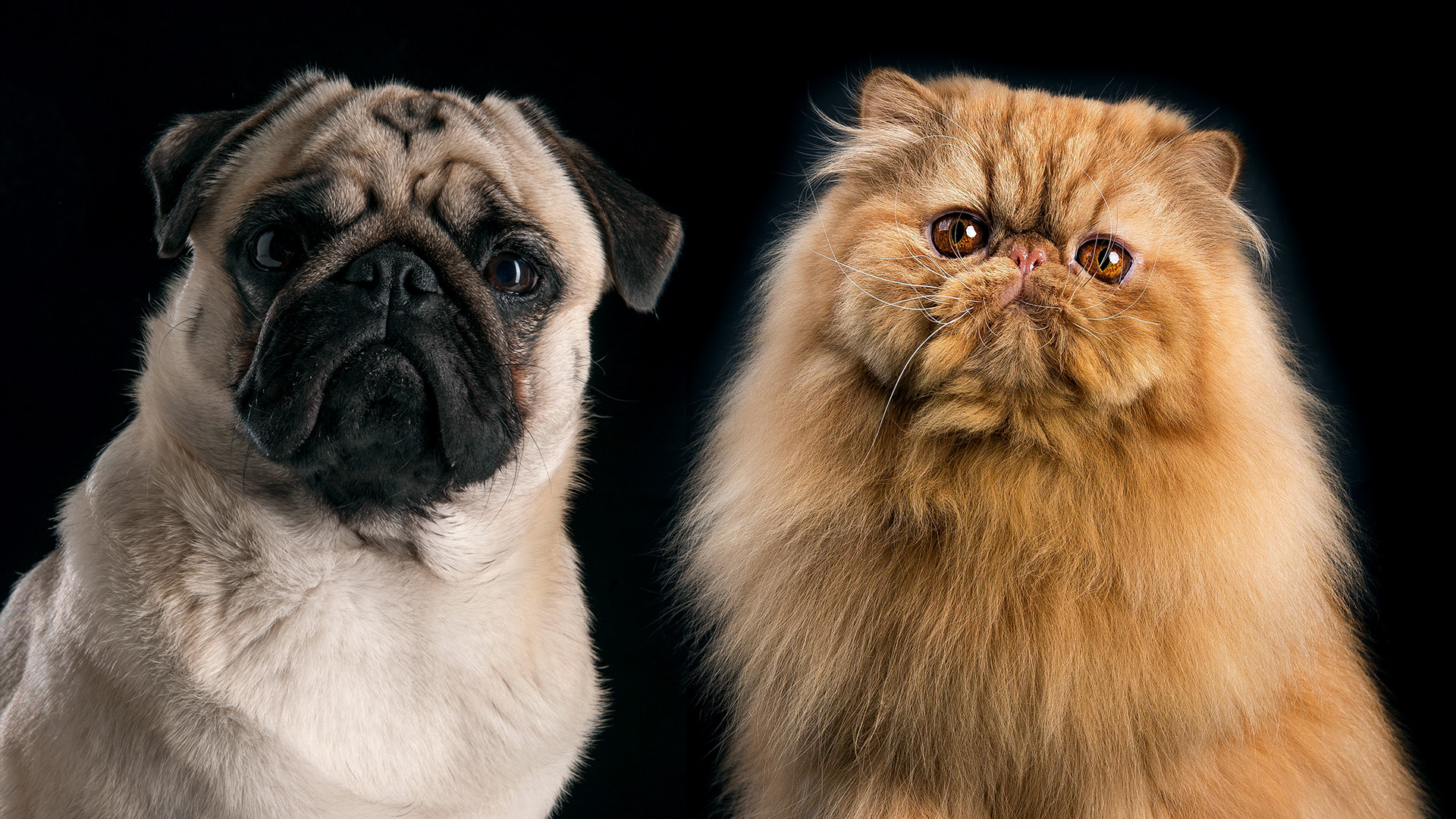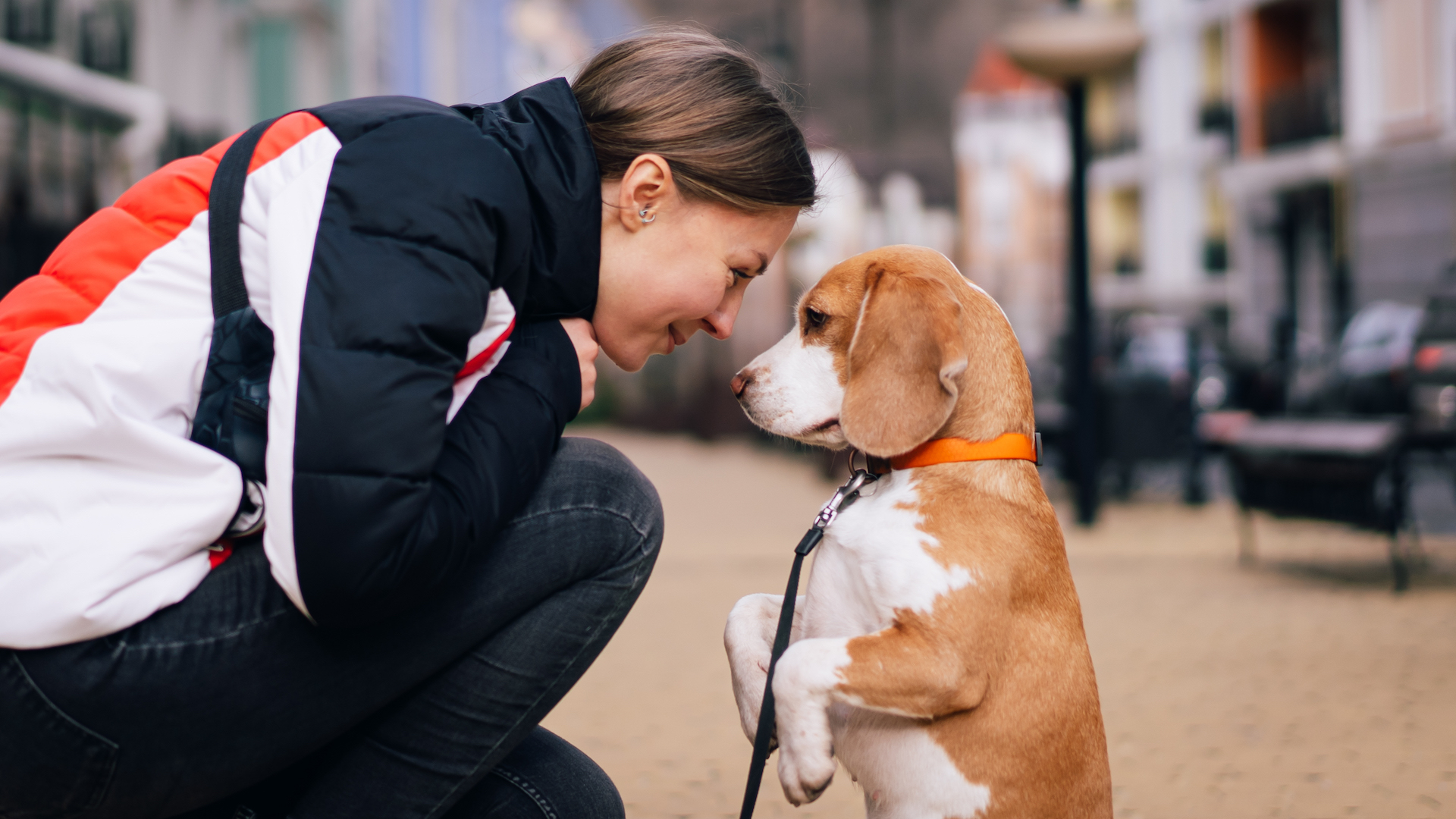Pugs and Persian cats have more in common with each other than they do other breeds of the same species, study finds
It’s the first time we’ve found an example of convergence through breeding cats and dogs

In lists of the most popular dog breeds and most popular cat breeds, you’ll often find flat-faced, or brachycephalic, animals.
Among the most well-known brachycephalic dogs are pugs and French Bulldogs, while Persians and exotic shorthairs are among the popular brachycephalic cats.
In a recent study, scientists at Cornell University and Washington University have found out how the way we breed these brachycephalic animal breeds has led to convergence, which is when unrelated animal and plant species evolve similar characteristics due to the conditions of their environment. For example, how some fish and some marine mammals converged on the same streamlined shape that’s ideal for living in the water.
Essentially, pugs and Persians are more similar to each other than they are to most of the other breeds in their respective species, and this is the first time that convergence through breeding cats and dogs has been noted.
Cats and dogs are believed to share a common ancestor, the miacid, a carnivoran. Carnivorans split into two suborders, cats and cat-like animals and dogs and dog-like animals, and dogs and cats have been separated evolutionarily for 50 million years.
Convergence had never previously been observed in domestic species until now, but when the researchers measured the skulls of brachycephalic dogs and cats, they found a lot of overlap between Persian cats and pug and Pekingese dogs.
"Persian cats and pug and Pekingese dogs all have skull shapes that are very similar to each other, with flat and short faces, and their muzzles and palettes are tilted up in the same way," said Dr Abby Drake, senior lecturer at Cornell and a corresponding author on the paper.
Get the best advice, tips and top tech for your beloved Pets
This pattern of convergence has also occurred within each separate species, too. For example, it’s occurred not only in Bulldog breeds but in breeds like the Pekingese and shih tzu. And, in cats, it’s occurred in Persian, Himalayan, and Burmese breeds at the same time.
The researchers mapped the shapes of the animals’ skulls and compared them, discovering similarities despite a dog and a cat’s last common ancestor being around millions of years ago.
“They start off in different places," Drake said, "but because humans applied the same selection pressures, they evolved to look almost identical to each other."
However, Drake offered a word of warning, too. Because of how we’ve bred brachycephalic breeds, they struggle with natural behaviors like breathing and eating, and would not survive in the wild.

Adam is a freelance journalist specialising in pets, music and culture, and mental health and wellbeing. He investigates and writes the large majority of news on PetsRadar, and collaborates with veterinary experts to produce informative pet care content.
Adam has a journalism degree from Southampton Solent University and a masters degree in Magazine Journalism from Cardiff University. He was previously senior editor at dog advice website DogTime.com, and has also written for The Independent, GoodToKnow and Healthline.
He owns two rescue cats, Bunny and Dougie, and has also previously had a rabbit, fish and Roborovski dwarf hamsters.
